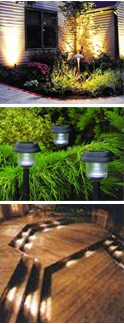indoor led lighting

Indoor LED lighting refers to the use of LED (Light Emitting Diode) technology for illuminating the inside areas of homes, offices, commercial buildings, and numerous indoor environments. more info has gained widespread recognition for indoor applications as a result of its energy effectivity, longevity, versatility, and quality of sunshine. Here are some key issues and advantages of indoor LED lighting:
Benefits of Indoor LED Lighting:
Energy Efficiency:
LED lights are extremely energy-efficient, consuming significantly much less electrical energy compared to conventional incandescent and fluorescent lights. This ends in decrease vitality bills and decreased environmental impression.
Longevity:

LED lights have an exceptionally lengthy lifespan, usually lasting 25,000 to 50,000 hours or more. This reduces the need for frequent replacements, saving both time and money.
Instant Lighting:
LEDs present immediate illumination when turned on, with no warm-up time required. They reach full brightness immediately, making them suitable for applications where instant lighting is required.
Cool Operation:
LEDs emit very little heat in comparison with incandescent and halogen bulbs. This makes them safer to make use of, especially in enclosed fixtures, and reduces the load on air conditioning methods.
Dimmability:
Many LED fixtures and bulbs are dimmable, allowing customers to regulate the brightness to create the desired ambiance and save extra energy when full brightness isn't needed.
Color Temperature Options:
LEDs are available in varied shade temperatures, from heat white (providing a comfy, yellowish light) to cool white (offering a bright, bluish-white light). This versatility permits customers to pick lighting that fits their preferences and needs.
Color Rendering Index (CRI):
LEDs can obtain excessive CRI values, which implies they accurately render colors compared to pure daylight. This is necessary for purposes the place shade accuracy is crucial, similar to in art galleries, retail settings, and makeup areas.
Low UV Emissions:
LEDs emit minimal ultraviolet (UV) and infrared (IR) radiation, lowering the danger of damage to delicate supplies, fabrics, and artwork.
Versatility:
LEDs are available in a wide range of fixtures, including recessed downlights, monitor lights, pendant lights, strip lights, and more. This allows for flexibility in designing and customizing indoor lighting schemes.
Smart Lighting Integration:
Many indoor LED lighting methods could be integrated into good residence or constructing automation systems. This permits distant control, scheduling, and customization of lighting to satisfy particular wants and preferences.
Task Lighting and Accent Lighting:
LEDs are ideal for process lighting in kitchens, places of work, and workspaces, providing focused illumination. They are also used for accent lighting to focus on architectural features, artwork, or decorative parts.
Environmental Benefits:
LED lighting contributes to vitality conservation and decreased greenhouse gasoline emissions because of its low power consumption and lengthy lifespan. It also accommodates no hazardous materials like mercury, which is present in some other types of lighting.
Indoor LED lighting has revolutionized inside lighting design, offering energy-efficient and versatile solutions for a variety of residential and business applications. When choosing indoor LED lighting, consider elements such as the meant purpose, desired ambiance, shade temperature, and CRI to create a well-lit and comfy indoor surroundings..
